Discover 15 hidden attractions, cool sights, and unusual things to do in Aspen (United States). Don't miss out on these must-see attractions: Wheeler–Stallard House, Ashcroft, and Holden/Marolt Mining and Ranching Museum. Also, be sure to include Wheeler Opera House in your itinerary.
Below, you can find the list of the most amazing places you should visit in Aspen (Colorado).
Table of Contents
Wheeler–Stallard House
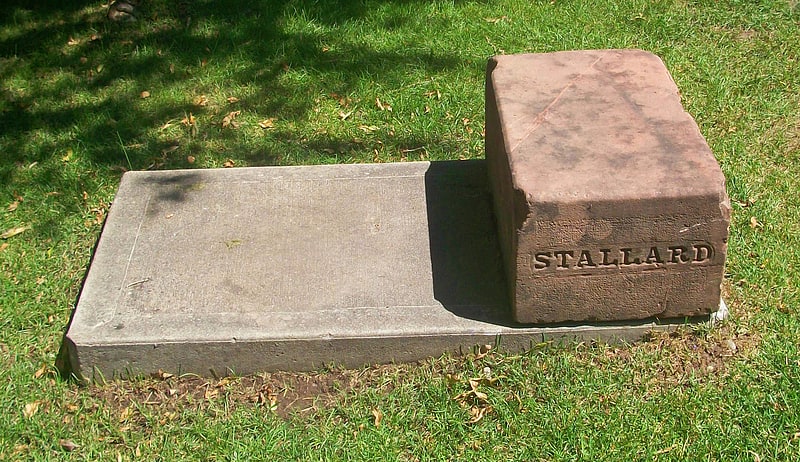
Museum in Aspen, Colorado. The Wheeler–Stallard House is located on West Bleeker Street in Aspen, Colorado, United States. It is an 1880s brick structure built in the Queen Anne architectural style, and renovated twice in the 20th century. In 1975 it was listed on the National Register of Historic Places.
It was built by Jerome B. Wheeler, an early investor in Aspen's silver mines during its boomtown years. He and two wealthy tenants rarely spent much time in the house before the Colorado Silver Boom ended in 1893. After a decade of vacancy, it became the home of the Stallard family for much of the early 20th century, the "quiet years" when Aspen's economy was depressed and its remaining residents struggled to make a living.
After World War II it was bought by Walter Paepcke, who like Wheeler came to visit Aspen and invested heavily in its development, leading to the city becoming a cultural center and upscale ski resort. He never lived there himself, and it eventually became the residence of Alvin C. Eurich during his tenure as Aspen Institute president. Since the late 1960s it has been the home of the Aspen Historical Society, which operates it partially as a historic house museum.[1]
Address: 620 W Bleeker St, 81611-1230 Aspen
Ashcroft
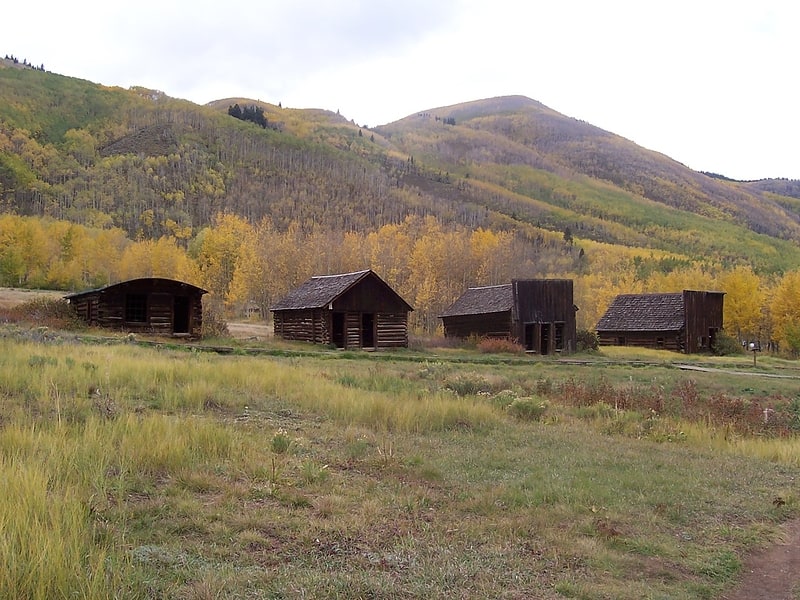
City in Colorado. Ashcroft, originally known as Castle Forks City then Chloride until 1882, was a mining town located ten miles south of Aspen, Colorado, United States. A few buildings remain standing as a testament to the town's past.[2]
Address: Castle Creek Road, Aspen
Holden/Marolt Mining and Ranching Museum
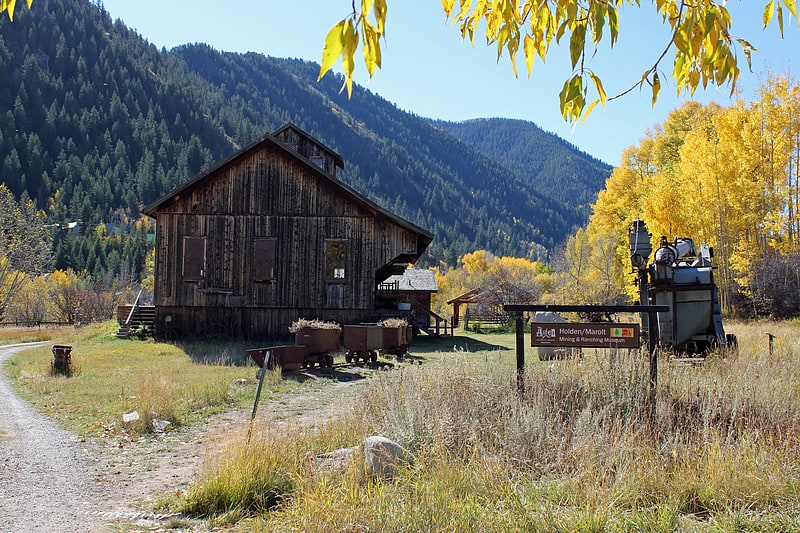
Museum in Aspen, Colorado. The Holden/Marolt Mining and Ranching Museum is located on the former Holden Mining and Smelting Company facility on the western edge of the city of Aspen, Colorado, United States. It consists of one remaining building and the remains of some others. In 1990 it was recognized as a historic district and listed on the National Register of Historic Places, the only district in the city to be so recognized.
It was built in 1891 to process ore mined from the mountains around the city into silver through lixiviation. Within two years it had to be shut down when a change in U.S. government policy led to a huge drop in silver production and drove it into bankruptcy. The buildings remained standing and were eventually bought by a local rancher to expand. His family later donated them to the Aspen Historical Society, which restored them and reopened the property as a museum of its early days as a mining boomtown.[3]
Wheeler Opera House
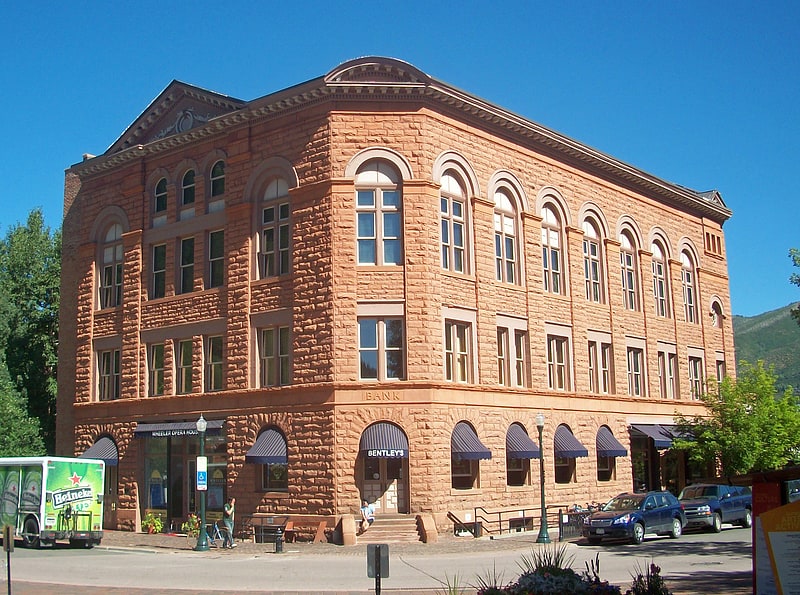
Building in Aspen, Colorado. The Wheeler Opera House is located at the corner of East Hyman Avenue and South Mill Street in Aspen, Colorado, United States. It is a stone building erected during the 1890s, from a design by Willoughby J. Edbrooke that blends elements of the Romanesque Revival and Italianate architectural styles. In 1972 it became the first property in the city to be listed on the National Register of Historic Places, and the second in Pitkin County. The upstairs auditorium hosts a number of events every year, ranging from nationally prominent music and comedy acts and some of the Aspen Music Festival's events to productions by local community groups.
It is one of two buildings in town named after early developer Jerome B. Wheeler. Originally, the opera house was located on the third floor, with retail space at street level and professional offices on the second floor. An early 20th-century arson fire damaged the interior, and in its wake the theater fell into disuse. The building became property of the city due to tax default. Later in the century it was renovated several times, twice from designs by Herbert Bayer, to bring it back into full use. For a while the Pitkin County Library was located in the building as well.
Today it houses retail space and a restaurant in addition to the auditorium space, and is one of Aspen's most prominent landmarks. The city funds its operations through a real estate transfer tax that has built up a large surplus over the years. The Comedy Festival, then known as the HBO/US Comedy Arts Festival, was held in the building annually from 1985–2007. Among the performers who have appeared at the Wheeler are Lily Tomlin, Renée Fleming, Phish, John Denver and Bill Maher. Kate Hudson made her debut there as an elementary school student. Michael Hutchence's last official live recording with INXS was also recorded at the Wheeler, within a year of his death.[4]
Address: Aspen, 320 E. Hyman Avenue
Aspen Art Museum

Museum in Aspen, Colorado. Founded in 1979, the Aspen Art Museum is a non-collecting contemporary art museum located in Aspen, Colorado. AAM exhibitions include drawings, paintings, sculptures, multimedia installations and electronic media.[5]
Address: Aspen, CO 81611, Aspen
Ski Lift No. 1

The former Ski Lift No. 1 begins on Aspen Street in Aspen, Colorado, United States, and climbs up the slopes of Aspen Mountain. It was built in the late 1940s on the site of Aspen's first ski lift, known as the Boat Tow. In 1990 it was listed under that name on the National Register of Historic Places, one of only two ski lifts in the country so recognized.
It was originally built with motors and other equipment left over from Aspen's days as a silver mining center in the late 19th century. The development of the ski area that began with the lift began the revival of Aspen into the upscale resort town it has since become, which in turn helped establish downhill skiing as a major winter recreational activity in the Western United States after World War II.
When the current structure was opened, Aspen claimed it was the longest ski lift in the world. It was closed in 1971, but all its facilities remain on the mountain. It is one of the few remaining single-chair chairlifts in the United States. A small park and commemorative plaque have been established at the bottom station. One of the original boats was on display there as well, but has since been removed.[6]
Aspen Community Church
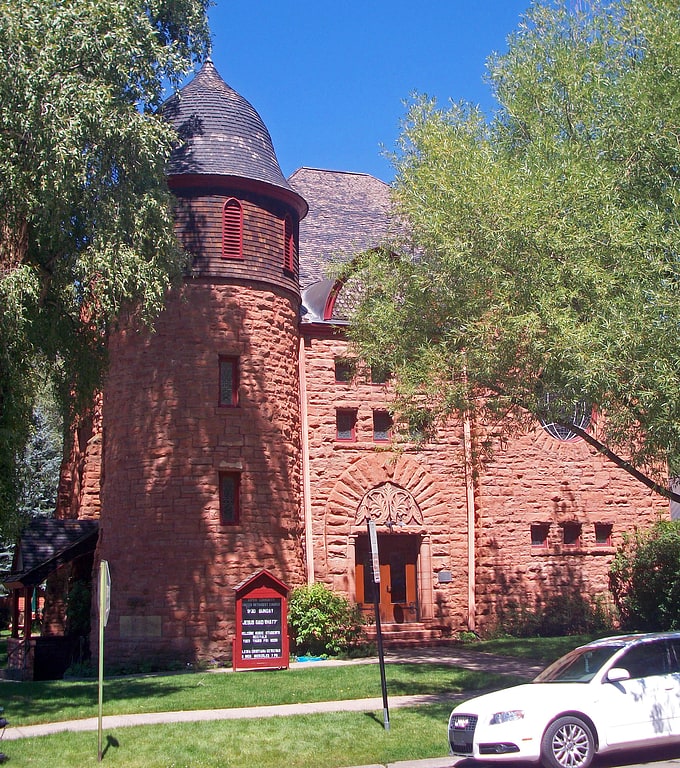
Building in Aspen, Colorado. Aspen Community Church is located at the intersection of East Bleeker and North Aspen streets in Aspen, Colorado, United States. It is a stone building erected in the late 19th century. In 1975 it was listed on the National Register of Historic Places, the only house of worship in Pitkin County to be accorded that distinction.
When built, it was originally the home of a Presbyterian congregation. Several decades later, when Aspen's population had declined considerably from the era when the church was built, the church merged into a Methodist congregation in the city, part of an agreement by which a Methodist church elsewhere in Colorado became Presbyterian. The church building, restored in the early 21st century, is largely intact from its original construction.
During the work, the largest organ on the Western Slope was installed. The church, often compared to a fortress or castle in appearance, has been a popular local music venue and is used annually by the Aspen Music Festival for recitals. It hosts two children's music camps of its own every summer, among a range of programs that include yoga and a mission to Kenya.[7]
Pitkin County Courthouse
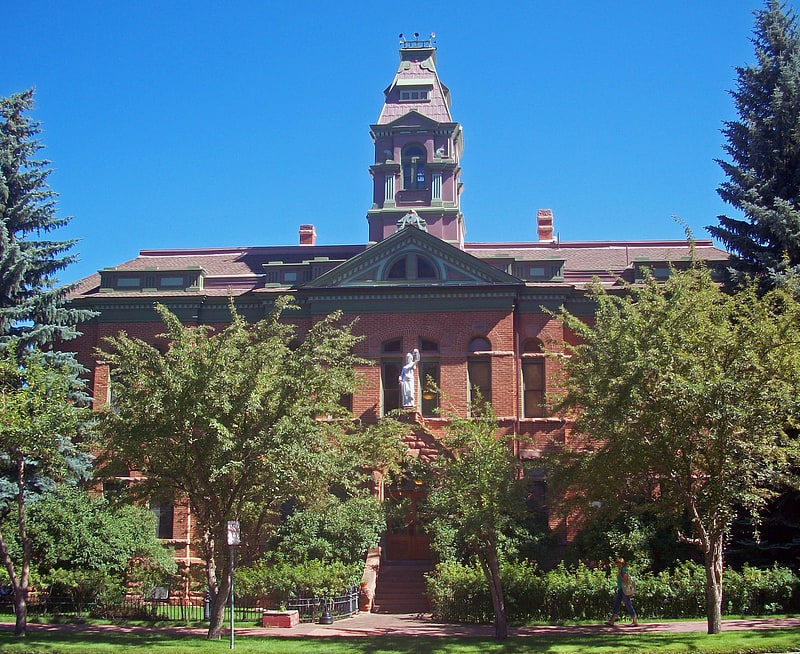
Building. The Pitkin County Courthouse is located on East Main Street in Aspen, Colorado, United States. It is a large brick building erected in the late 19th century that serves as offices not just of Pitkin County's courts but its other governmental agencies, and the Aspen police. A landmark of the city, it was listed on the National Register of Historic Places in 1975.
Like many courthouses, it has a statue of Lady Justice in the front. Unlike many of the other such statues, she is depicted without a blindfold. In the late 20th and 21st centuries, as Aspen became a popular destination for wealthy and famous people, the courthouse has seen several high-profile defendants and litigants, from Ted Bundy to Charlie Sheen.[8]
Address: 120 N Mill St, 81611-1502 Aspen
Aspen Historical Society
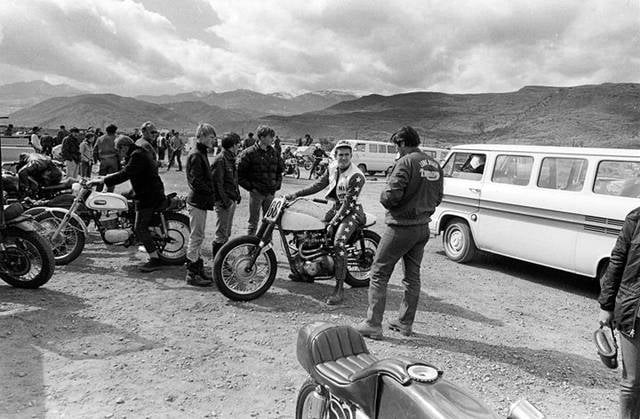
Museum, Historical and heritage tours, Tours, History museum
Address: 620 W Bleeker St, 81611-1230 Aspen
Ute Cemetery
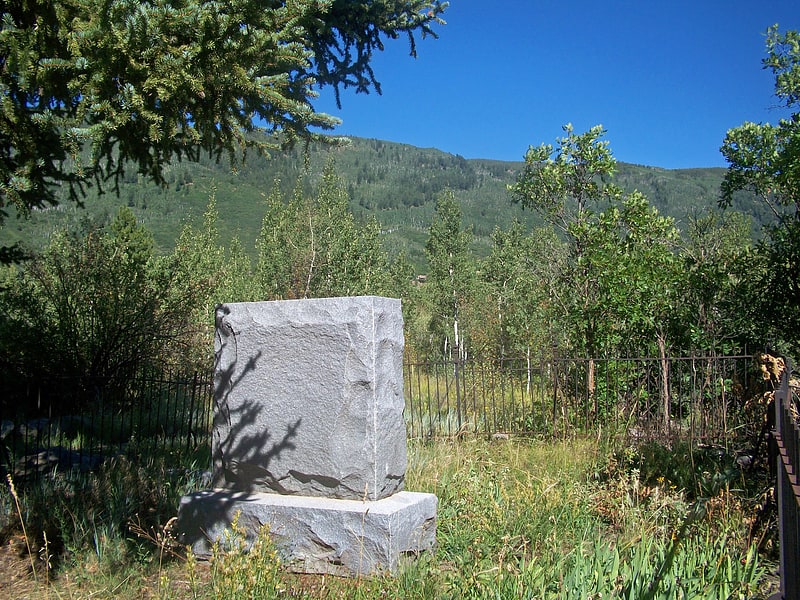
Cemetery in Aspen, Colorado. Ute Cemetery, known as Evergreen Cemetery in the 19th century, is located on Ute Avenue in Aspen, Colorado, United States. It is a small, overgrown parcel with approximately 200 burials. In 2002 it was listed on the National Register of Historic Places.
The cemetery was established early in Aspen's history, when a visiting prospector died upon arrival from Texas. There were no formal burial grounds in the new settlement, not even yet incorporated as a city, and the land later used for the current cemetery was used for this first death in the new community. Later, even as two more formal cemeteries were established elsewhere in the city, it continued to be the burial ground for the city's poorer citizens, including some Civil War veterans, until the Great Depression in the 1930s.
After its last burials it fell unmaintained and overgrown, even as skiing and other resort industries revived Aspen's economy in the late 20th century. Trees grew amid many graves. A renovation in the early 21st century, following the listing on the Register, took account of the total graves and restored the many footpaths through the cemetery, popular with local hikers and mountain bikers, but left the wooded nature of the cemetery undisturbed. It is one of the few historic cemeteries in Colorado to have been completely restored.[9]
Address: Ute Ave., Aspen
Maroon Creek Bridge
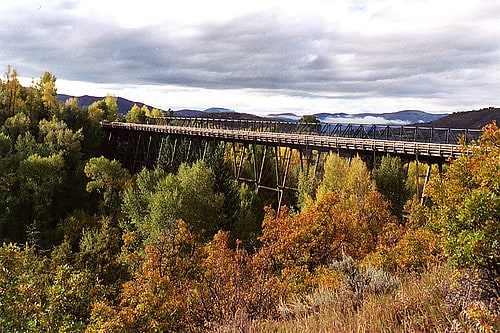
Trestle in Aspen, Colorado. The original Maroon Creek Bridge is a steel trestle along State Highway 82 at the western boundary of Aspen, Colorado, United States. It was designed by George S. Morison in 1888 for the Colorado Midland Railroad, one of the last viaducts in Colorado built for a standard gauge mountain railroad in the 19th century. Of the five steel bridges the Midland built, it is the only one still extant. Due to the later removal of most track and the rail depots, the bridge is the most visible remnant of rail service to Aspen. In 1985 it was listed on the National Register of Historic Places along with other highway bridges in the state, including the Sheely Bridge, also in Aspen.
When it was built, the Midland was ahead in its race with the Denver and Rio Grande to make the first rail connection to Aspen, then a booming silver mining center. The Midland had followed the Roaring Fork Valley up from its main line at Glenwood Springs, but was stalled at Maroon Creek by a delay in the bridge steel. The Rio Grande was thus able to make up the difference and bring the first train to Aspen, with the Midland following a few months later.
Aspen's boom years ended a few years later, and by the 1920s the bridge was abandoned. It was soon expanded and converted to use as a road bridge. It served as the main entrance to Aspen for many visitors as the city's economy rebounded when the Aspen Mountain ski resort was developed after World War II. As growth spilled over to Aspen's west, it became a traffic choke point for the region.
It remained in use until longstanding plans for a newer, wider bridge came to fruition in 2008. At that time the original bridge was the oldest one still in use on Colorado's state highways. The award-winning new bridge was designed to be aesthetically similar to its predecessor, which remains in service as a foot bridge. It may be used for a light rail line to further alleviate traffic problems in the valley.[10]
Aspen City Hall
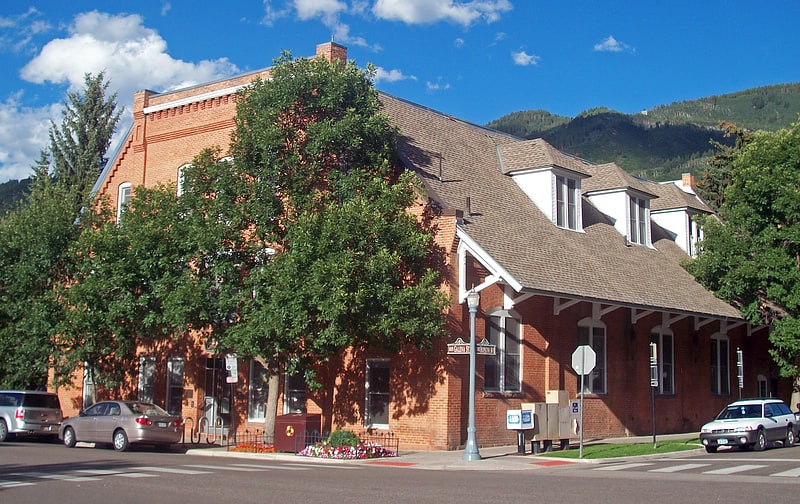
City government office in Aspen, Colorado. Aspen City Hall, known in the past as Armory Hall, Fraternal Hall, is located at the intersection of South Galena Street and East Hopkins Avenue in Aspen, Colorado, United States. It is a brick building dating to the 1890s. In 1975 it was listed on the National Register of Historic Places.
It was built to serve both as headquarters for the local militia and as a community gathering place. It served a variety of community-related functions, eventually becoming city hall in the mid-20th century. Later in the century, as the city grew again into an affluent resort community, it had to move some of its departments to other office space and renovate the city hall extensively, particularly inside.[11]
Pioneer Park
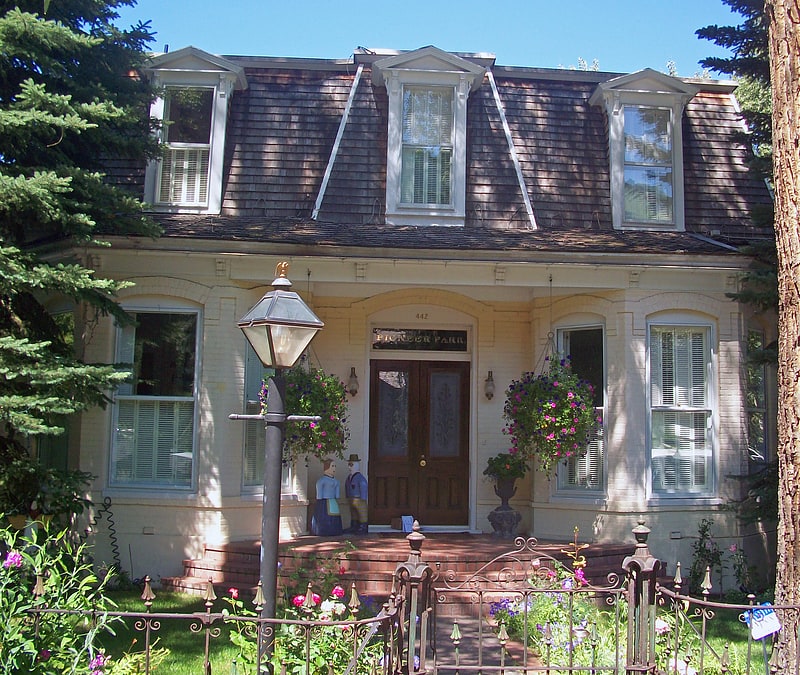
Park in Aspen, Colorado. Pioneer Park, also known as the Henry Webber House or the Webber–Paepcke House, is located on West Bleeker Street in Aspen, Colorado, United States. It is a brick structure erected in the 1880s, one of the few such homes in the city. In 1987 it was listed on the National Register of Historic Places.
Henry Webber, its builder, was a shoe merchant who grew wealthy from his mining investments during Aspen's original growth during the Colorado Silver Boom. The house is said to be haunted by the ghost of his wife Harriet, who died under controversial circumstances. It is the only intact house in the Second Empire architectural style in the city, particularly on the interior. At one time it was owned by Walter Paepcke, the Chicago businessman who led Aspen's mid-20th-century renaissance as a ski resort town.
While Paepcke owned the house, he invited Albert Schweitzer to Aspen to give the keynote speech at a festival he organized to commemorate Johann Wolfgang von Goethe's bicentennial. It was Schweitzer's only visit to the U.S. and he stayed in the carriage house at the rear of the property. Today that building, a contributing resource to the Register listing, is known as Schweitzer Cottage. The house remains a private residence.[12]
Aspen Center for Environmental Studies
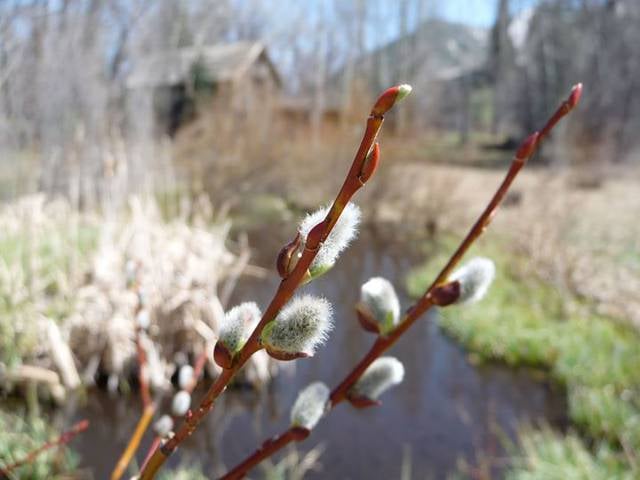
Park, Relax in park
Address: 100 Puppy Smith St, 81611-1451 Aspen
Sheely Bridge
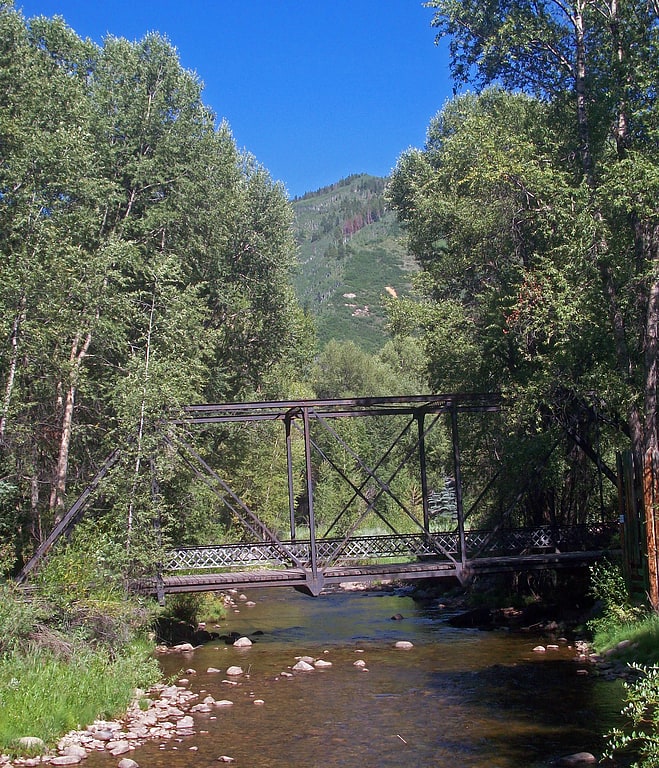
Truss bridge in Aspen, Colorado. The Sheely Bridge, originally known as the Carbondale Bridge, carries pedestrian traffic across the Roaring Fork River at Mill Street Park in Aspen, Colorado, United States. It is a short steel truss bridge originally located downstream in Carbondale and later moved to its present location.
It takes its current name from designer and builder Charles Sheely. When built as a highway bridge in the early 20th century it was one of the first in the state to use rivets. It served its original purpose until the 1960s. In 1985 it was listed on the National Register of Historic Places and is one of two bridges in Aspen with that distinction, along with the Maroon Creek Bridge at the city's west end.[13]